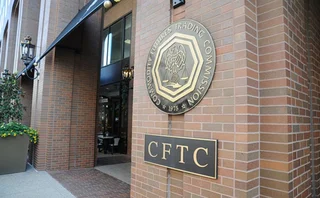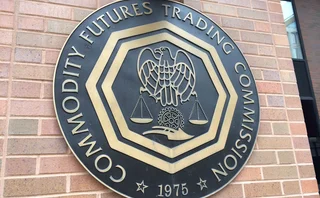
CCAR as a powerful business and risk management tool
Firms should use stress testing to challenge assumptions

Lourenco Miranda is head of CCAR at Societe Generale Corporate & Investment Banking
The US Comprehensive Capital Analysis and Review (CCAR) is one of the hottest topics in the market right now. On the one hand, the bank holding companies (BHCs) have been dedicating a considerable amount of resources to getting their submissions right. On the other hand, the Federal Reserve has been putting a lot of pressure and emphasis on the banks that it is not only the numbers that matter, but also how they got them.
The CCAR is an annual test conducted by the Fed. The main objective is to evaluate whether each large BHC, or an intermediate holding company of a foreign banking organisation operating in the US, has sufficient capital to continue operations throughout times of economic and financial stress. Moreover, it will demonstrate to the general public that each one has robust, forward-looking capital-planning processes that account for its unique risks.
Those capital plans must account for the individual risks of each large financial institution, and must help certify that they have adequate capital to continue operations throughout times of economic and financial stress – and that the process of obtaining this cushion is also sound, credible, verifiable and repeatable.
CCAR has changed the political geography and challenged the equilibrium of power inside financial institutions
The most important part of the programme is to assess whether the bank possesses adequate capital and if its capital structure can tolerate several stress scenarios. In addition, it also determines whether the planned capital distributions, such as dividends and share repurchases, are appropriate given the bank's capacity to absorb the losses under stressed conditions and keep business going.
The Fed may object to a bank's capital plan, based on either quantitative or qualitative grounds. This means the BHC not only has to produce capital ratios under stress above certain levels in a dynamic balance sheet projection over nine quarters, but also to show that the processes and procedures leading to those numbers are robust. The numbers are therefore as credible as the process used to achieve them.
Reviving macroprudential supervision
CCAR has changed the political geography and challenged the equilibrium of power inside financial institutions. CCAR did what Basel never could: it pushed the business, finance and risk functions together to work hand-in-hand. And it didn't stop there: CCAR, for the first time, married a microprudential supervision approach developed in the late 1990s and early 2000s with a macroprudential supervision philosophy that had been dormant since the mid-1990s.
The regulators have been eager to revisit the macroprudential approach for regulatory policy since the introduction of extra higher-quality capital to the Basel III framework. Several aspects of Basel III reflect a macroprudential approach to financial regulation. The Basel Committee itself acknowledges the systemic significance of financial institutions in the proposed rules. More concretely, under Basel III, banks' capital requirements have been strengthened and new liquidity requirements, a leverage cap and a counter-cyclical capital buffer have been introduced, making it the most appropriate mechanism to address systemic risk.
However, CCAR is the first macroprudential supervisory tool in which a capital plan and a comprehensive review of the capital adequacy of a financial institution play a fundamental role. The capital adequacy review should apply fundamental concepts of macroprudential regulatory policy practice to address systemic risk, and CCAR has proved to be a very effective way of accomplishing that objective.
In order to measure systemic risk, macroprudential regulation relies on several indicators. An important distinction that needs to be taken into account in the whole systemic risk analysis is between measuring contributions to the risk of individual institutions (the cross-sectional dimension) and measuring the evolution – the pro-cyclicality – of systemic risk through time (the time dimension).
The cross-sectional dimension of risk can be monitored by tracking balance sheet information, total assets and their composition, liabilities and capital structure, as well as the value of the institutions' trading securities and securities available for sale.
To address the time dimension of risk, a wide set of variables are typically used; for instance, the ratio of credit to gross domestic product (GDP), real asset prices, the ratio of non-core to core liabilities of the banking sector, and monetary aggregates. This is the reason why CCAR is very much concerned with macroeconomic factor projections and the interconnectivity of the financial institutions via the economy.
Beyond capital management
There are some significant differences between managing the bank through a stress-testing lens and via a capital management lens. In the stress-testing case under the CCAR framework, it is an accounting-based exercise, whereas capital is a value-based application.
Moreover, stress testing takes into account the entire P&L, which means it will incorporate revenues, projected growth, losses and expenses in a relative short-term forecast (usually the nine traditional quarters). Stress testing, unlike capital, is driven mostly by the economy and how it is forecasted in the different stress scenarios.
Capital calculation is more probabilistic: we must define a distribution of losses and capital would be a high quantile (tail-risk) of that distribution. Therefore, capital management is more concerned with solvency related events: will the firm be able to absorb and survive – in other words, be solvent through – an unexpected extreme loss?
There is a clear and undisputable link between risk management and capital planning. Risk management serves as the out-front function of challenging the business on how to generate healthy returns on capital, while safeguarding the adequacy of the economic capital at risk. Risk management practice should focus on one of its primary functions, which is capital preservation.
Future potential earnings should be in proportion to and closely connected with the potential losses caused by stress scenarios
Capital management should also be seen as a strategic function in a financial institution, as capital should be considered a fundamental restriction for viable business at all times and not only in moments of distress. As there is no unconditional access to capital, both risk and capital-management functions should have the objective to achieve, facilitate and guard a sufficiently high return on capital, under the constraint that the capital position does not drop below thresholds stipulated by either regulators or in the eyes of the shareholders through the board of directors.
However, we should not forget about the front line – the business. The success of risk and capital management with respect to capital preservation relies on the ability of both functions to place the burden of proof on to the business at the right time in the capital decision-making and review process.
Risk and capital management, together with the business, help to actively shape business strategy, including being an integral part of the budgeting cycle. It is imperative that risk and capital limits are aligned with the budget targets of a business line, and those assumptions should be challenged through a stress-testing exercise. This is a crucial part of the decision-making process of the firm. Future potential earnings should be in proportion to and closely connected with the potential losses caused by stress scenarios. That is why CCAR is a fundamental tool of capital adequacy.
CCAR should not be considered a mere check-the-box regulatory compliance exercise; it should be considered as a genuine capital and risk management tool that could, and should, be used by business for making better-informed decisions, especially for budgeting and business planning. By doing so, the firm and the system will be able to grow, whilst at the same time being prepared to weather another economic storm.
Lourenco Miranda is the author of "Capital Planning and Stress Testing under CCAR", published by riskbooks.com.
Only users who have a paid subscription or are part of a corporate subscription are able to print or copy content.
To access these options, along with all other subscription benefits, please contact info@risk.net or view our subscription options here: http://subscriptions.risk.net/subscribe
You are currently unable to print this content. Please contact info@risk.net to find out more.
You are currently unable to copy this content. Please contact info@risk.net to find out more.
Copyright Infopro Digital Limited. All rights reserved.
As outlined in our terms and conditions, https://www.infopro-digital.com/terms-and-conditions/subscriptions/ (point 2.4), printing is limited to a single copy.
If you would like to purchase additional rights please email info@risk.net
Copyright Infopro Digital Limited. All rights reserved.
You may share this content using our article tools. As outlined in our terms and conditions, https://www.infopro-digital.com/terms-and-conditions/subscriptions/ (clause 2.4), an Authorised User may only make one copy of the materials for their own personal use. You must also comply with the restrictions in clause 2.5.
If you would like to purchase additional rights please email info@risk.net
More on Dodd-Frank Act
US Treasury hands CCP resolution powers to FDIC
Mnuchin regulatory review explicitly refers to FDIC as receiver under a Title II resolution
Treasury review not rollback of reforms – CFTC counsel
Trump order is a chance to ease some rules and promote cross-border regulatory deference
Industry pushes CFTC to prioritise cross-border clarity
Approaching Mifid II deadline adds urgency to Giancarlo’s overhaul of Sef rules
Final US position limits rule will take ‘at least a year’
CFTC expected to draft a narrow list of contracts in scope
Covered funds seen as starting point for Volcker rule reform
Inter-agency consensus may prove more elusive on altering prop-trading definitions
US gives 21 banks another year to solve resolution problems
Banks including Societe Generale, Santander and BNP Paribas have until end-2018 to file plans
Bailout obsession holds back US CCP resolution regime
Dodd-Frank leaves legal uncertainty, but proposed alternatives could be even worse
Fed paper reignites debate on bank capital ratios
US industry association criticises official analysis suggesting optimal Basel ratios of up to 26%








